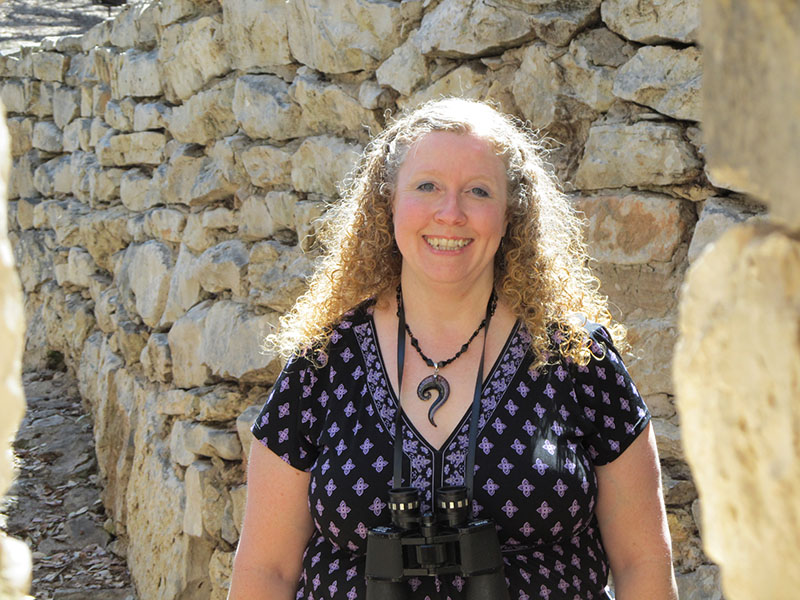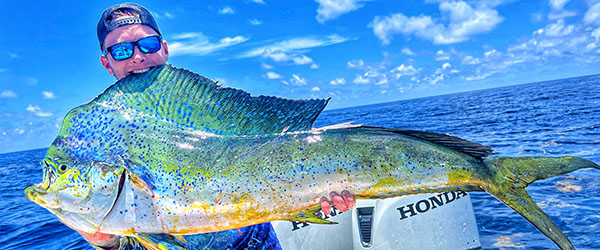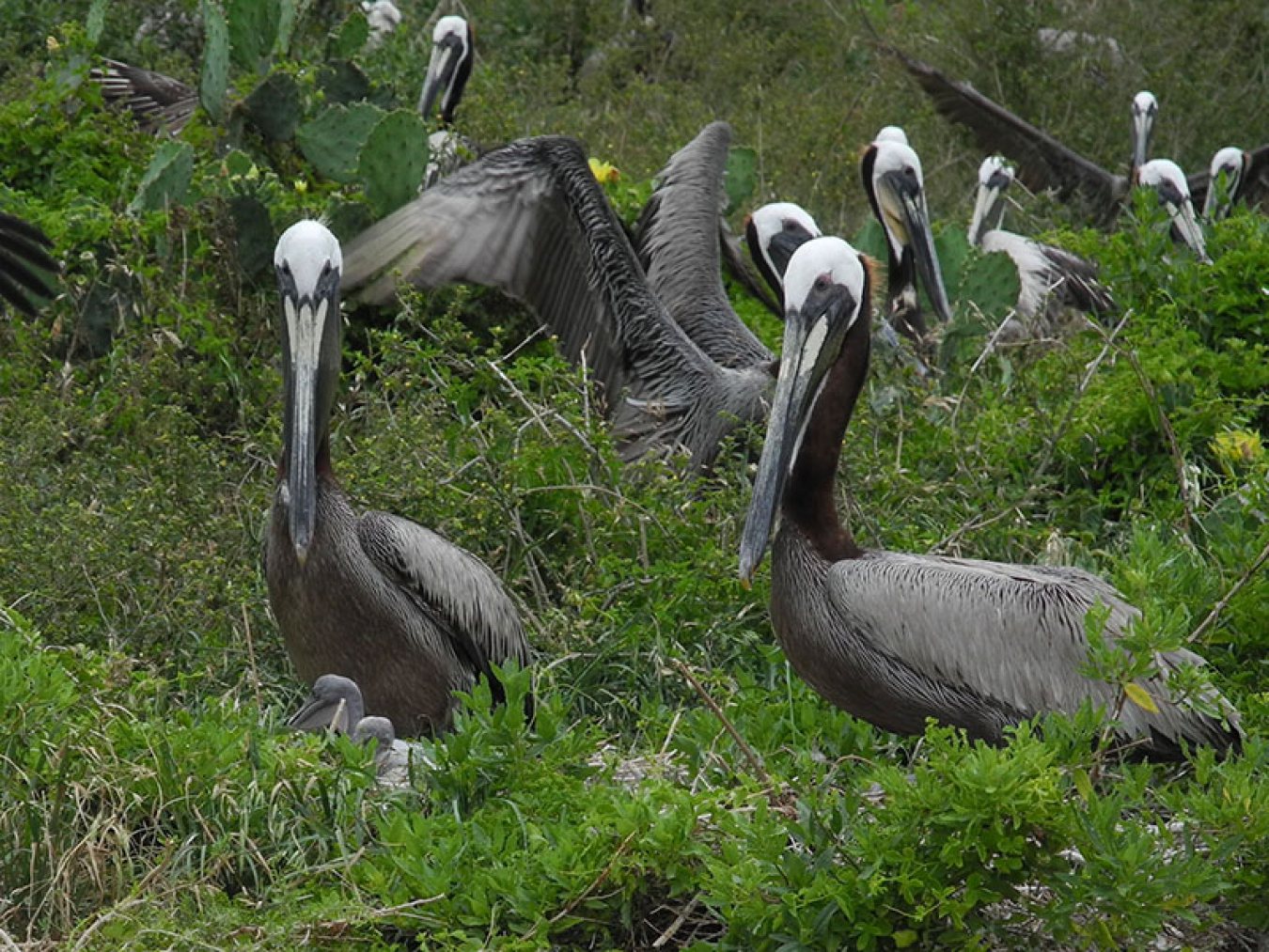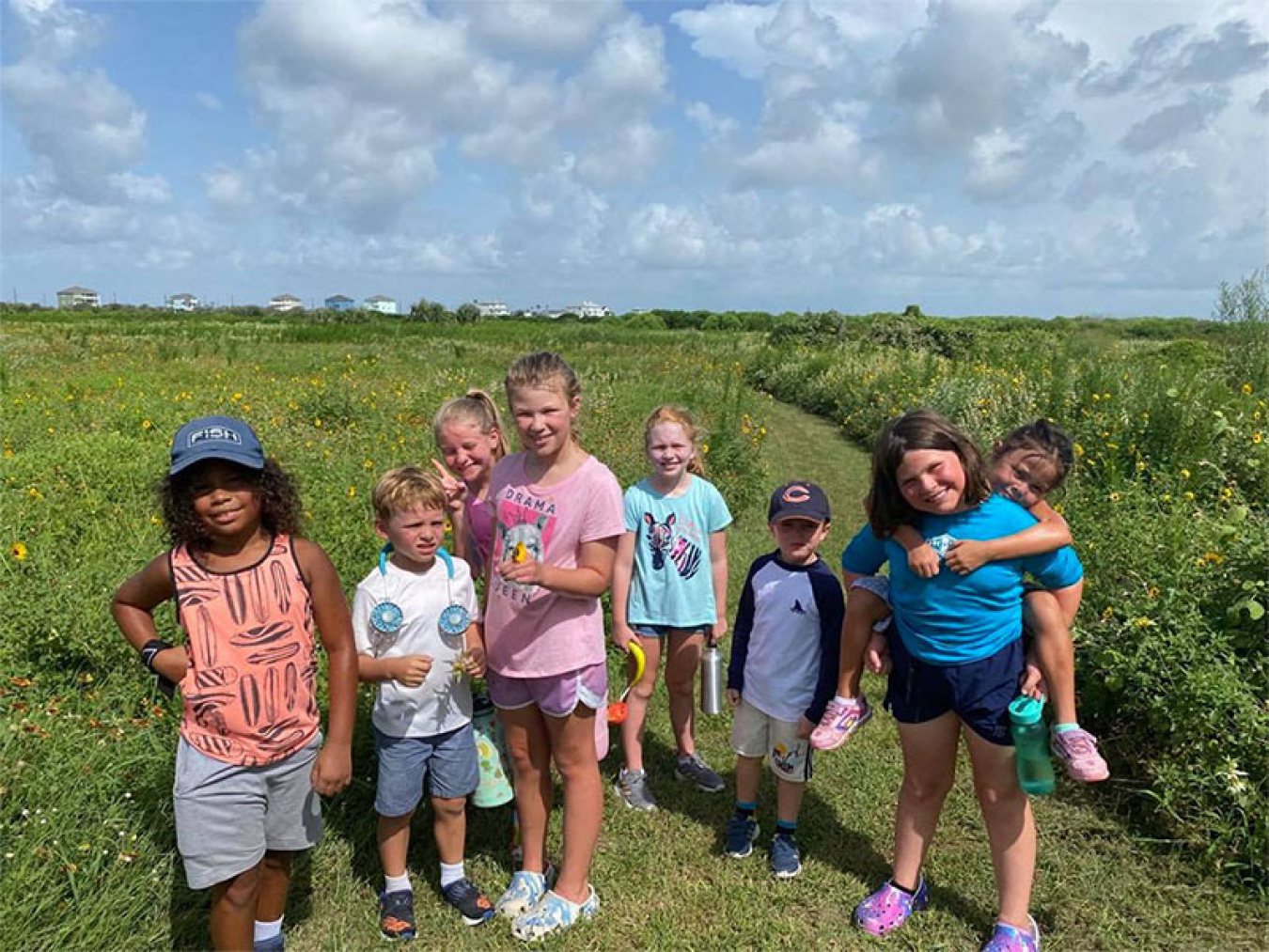Now's The Time To Sharpen Your ID Skills
Fall Migration Fast Approaching
With fall migration fast approaching, thousands of birds of many different species will soon be descending upon Galveston Island as they reach their wintering grounds here or travel through on their way further south. Identification can be difficult even for experienced birders due to the sheer number of unfamiliar birds in much plainer non-breeding plumage.
For this reason, this is a great time to start sharpening your ID skills. There are already some migrants beginning to appear in smaller numbers, and it is much better to get close views of small groups of birds than distant views of thousands.
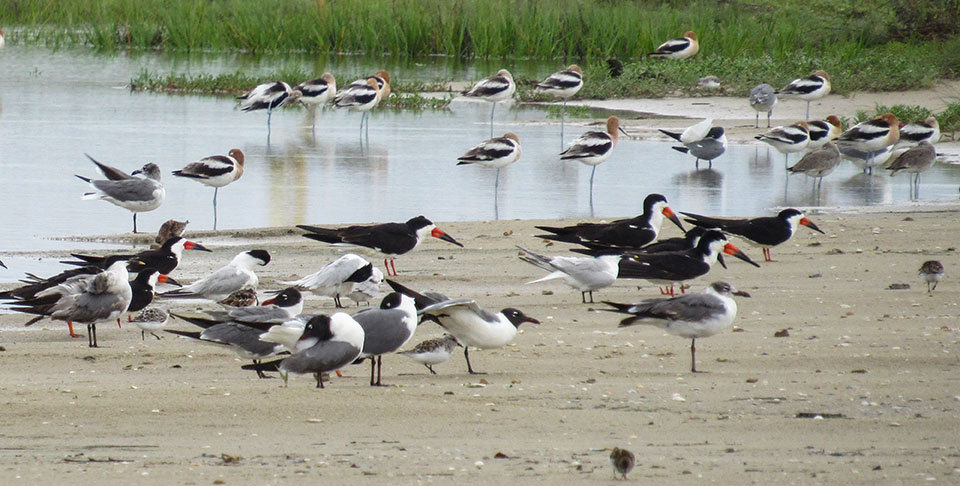
| A mixed flock of Laughing Gulls, Black Skimmers, American Avocets, Sanderlings, Ruddy Turnstones, and Willets at San Luis Pass | Kristine Rivers |
It may sound counter-intuitive, but I recommend putting your binoculars down for awhile when you reach an area with a high concentration of birds. You can learn so much by simply observing, before ever focusing on plumage details. Get a feel for the overall habitat – is it saltwater, freshwater, or brackish? How deep is the water? Are there any mudflats or sandy beaches? How much vegetation is there?
Now look again – each species of bird has its own needs for food and cover, and occupies a different niche within the habitat. Check for birds hiding in the vegetation, resting and preening on either water or land, flying overhead, and feeding.
If they are feeding, notice the behavior. Are they picking at things on the surface of the sand, probing deeply into mud, or actively hunting for prey by wading in deep water? Are they foraging in a tightly-packed group, or scattered as individuals?
If different species are near enough for comparison purposes, this is extremely helpful. Find a species you are familiar with to use as a size reference. Is the mystery bird larger or smaller than the known bird? Now check the sizes provided in your field guide – that will help narrow down the possibilities.
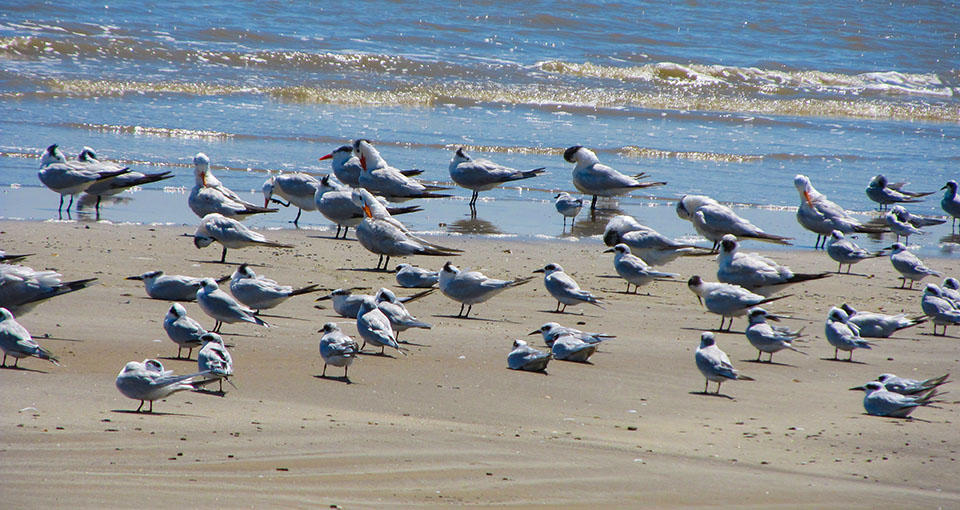
| A variety of terns, including Royal, Sandwich, and Forster’s. | Kristine Rivers |
A great example can be found with identification of gulls and terns, which may seem confusing at first. Let’s say you see a few birds soaring back and forth over the ocean as they repeatedly dive to catch fish. The birds are smaller and sleeker-looking than nearby Laughing Gulls, with pointed wings and deeply forked tails.
What can you gather from these observations? Terns are active foragers, hovering in mid-air before plunging head-first into the water to catch prey. Gulls are scavengers, more likely to steal fish from nearby pelicans or other birds than to find any prey on their own. That behavioral difference immediately draws your attention to the correct family – terns.
Factoring in the habitat (coastal saltwater with sandy beach) and the size (less than that of a Laughing Gull) will eliminate some species of terns as possibilities right away. The forked tail will narrow your focus even more. Now you can lift your binoculars with confidence to look at specific details such as plumage, leg and feet color, and bill shape and color, to decide between the remaining options. After confirming the most obvious field mark (dark eye-patches in winter), you successfully identify the mystery birds as Forster’s Terns.
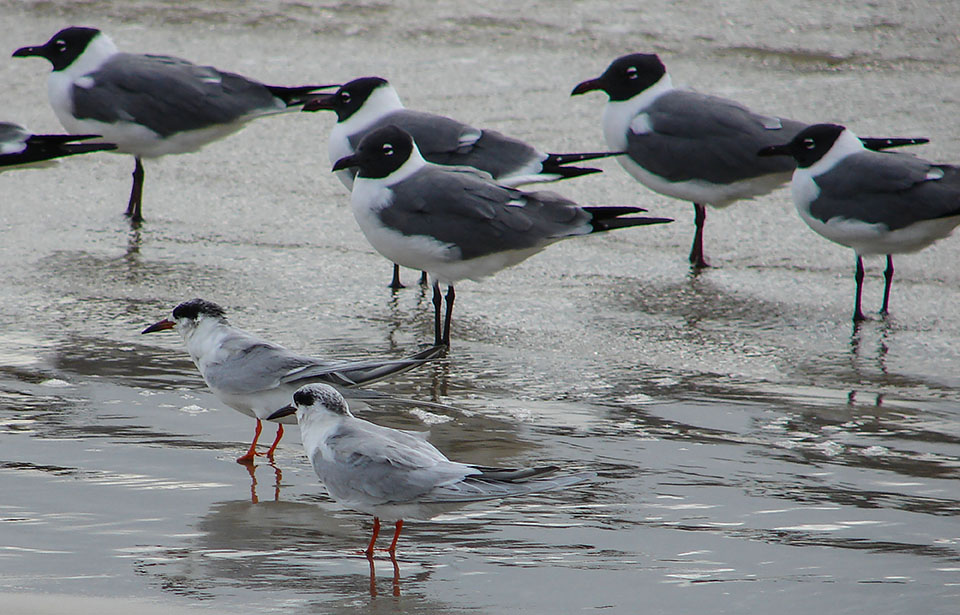
| Forster’s Terns and Laughing Gulls. | Kristine Rivers |
In summary, the best advice I can give you is to get out there as frequently as you can to practice your observation skills. You’ll be honing your identification skills at the same time, all while enjoying the beauty of the island.
#BirdGalveston
Samuel B Jewelry
We'll Get You Hooked Up!
Kristine Rivers
Kristine Rivers founded Birding for Fun in 2015, and is a popular tour guide and speaker whose enthusiasm for nature is contagious. A lifelong birder, she has been an area leader for the Brazoria Columbia Bottomlands Christmas Bird Count since 2011, and has been President of the Texas Master Naturalist Cradle of Texas chapter since January 2017.